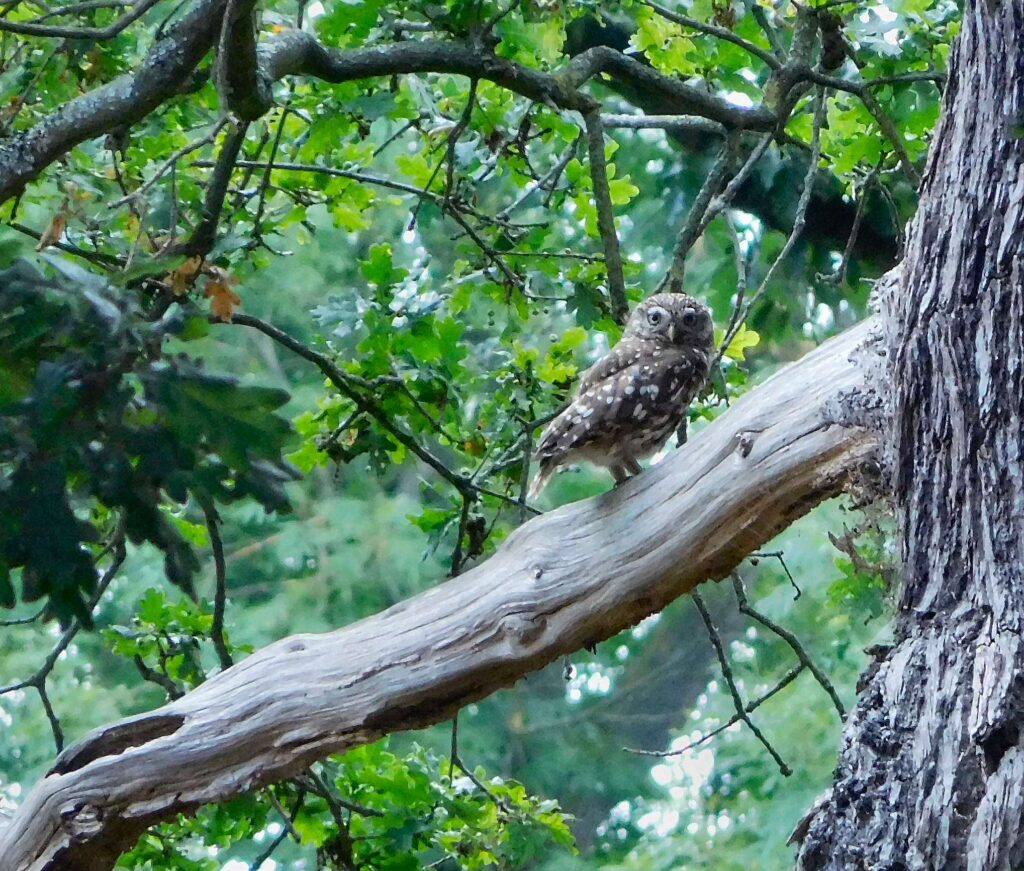
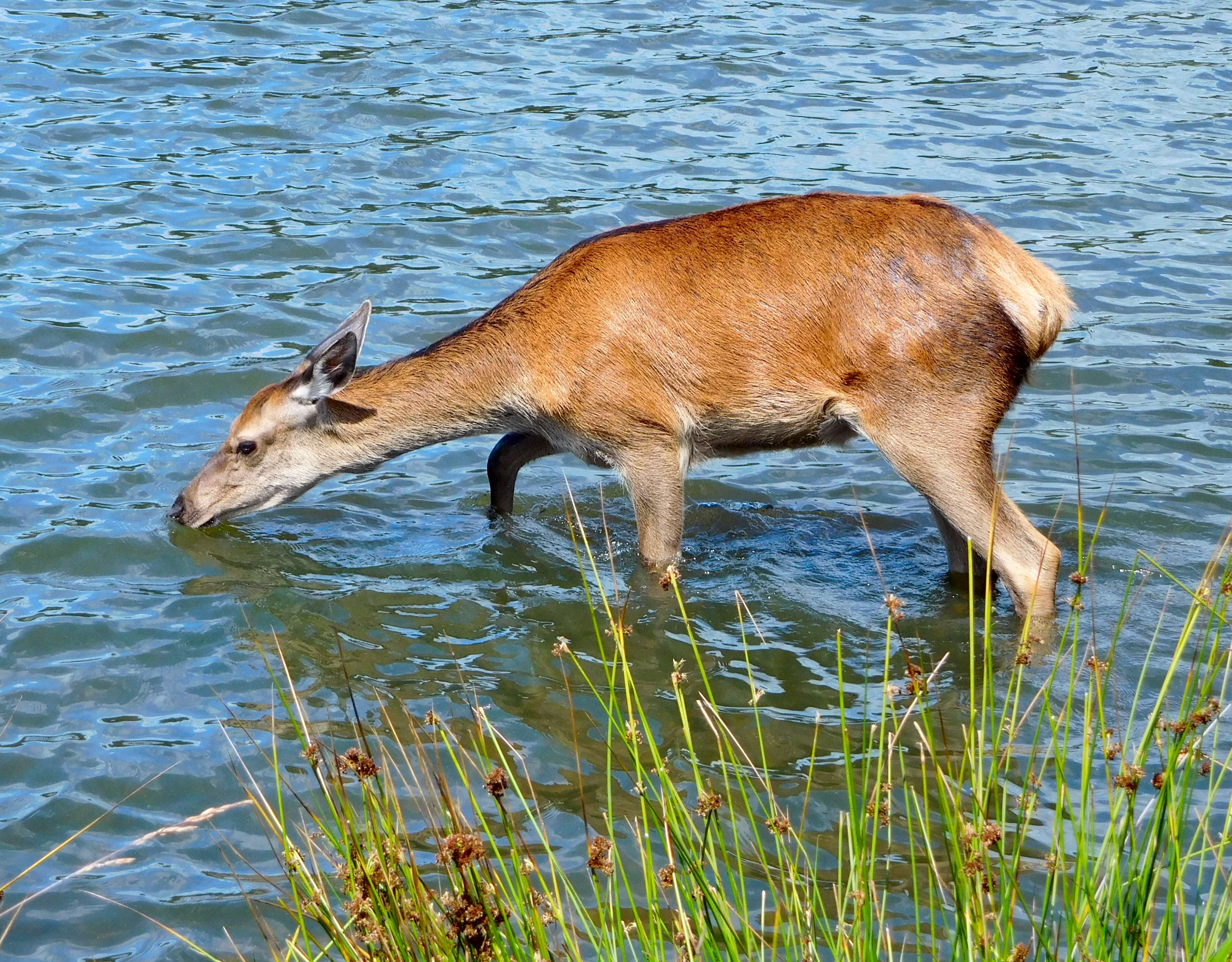
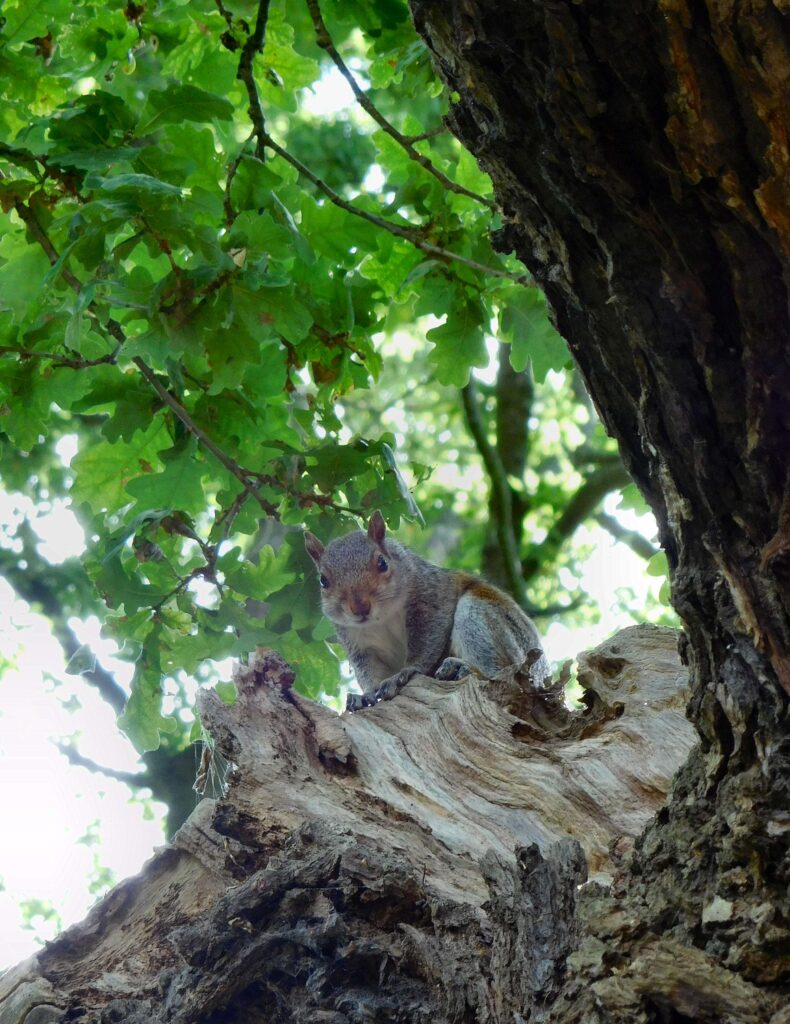



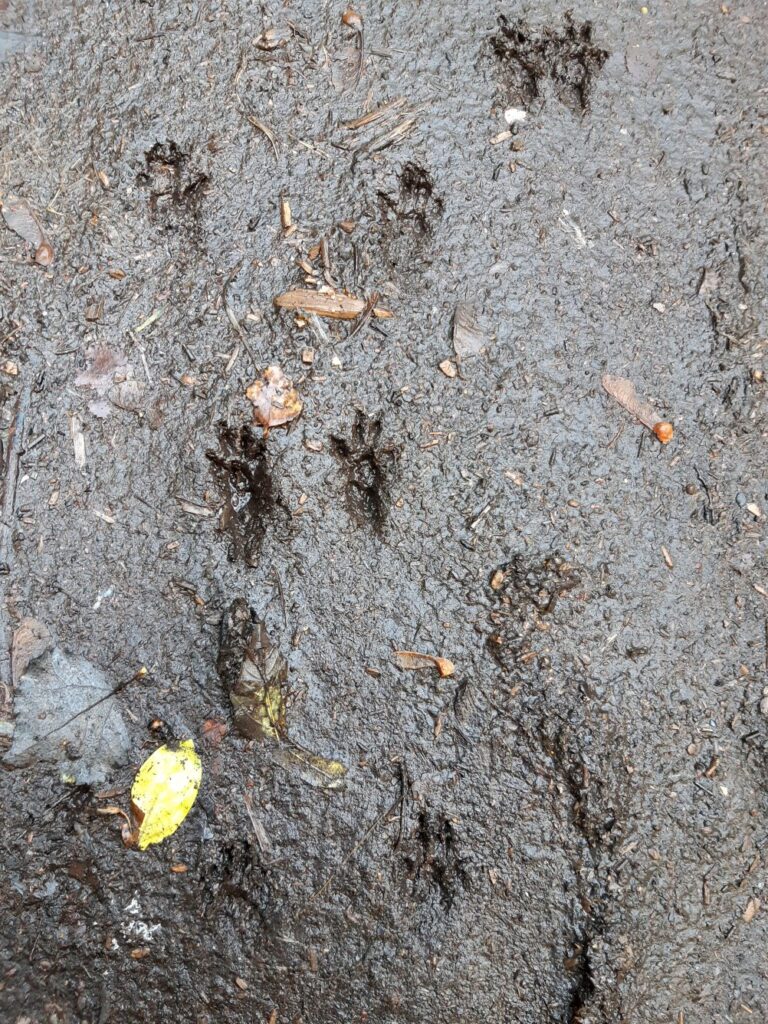
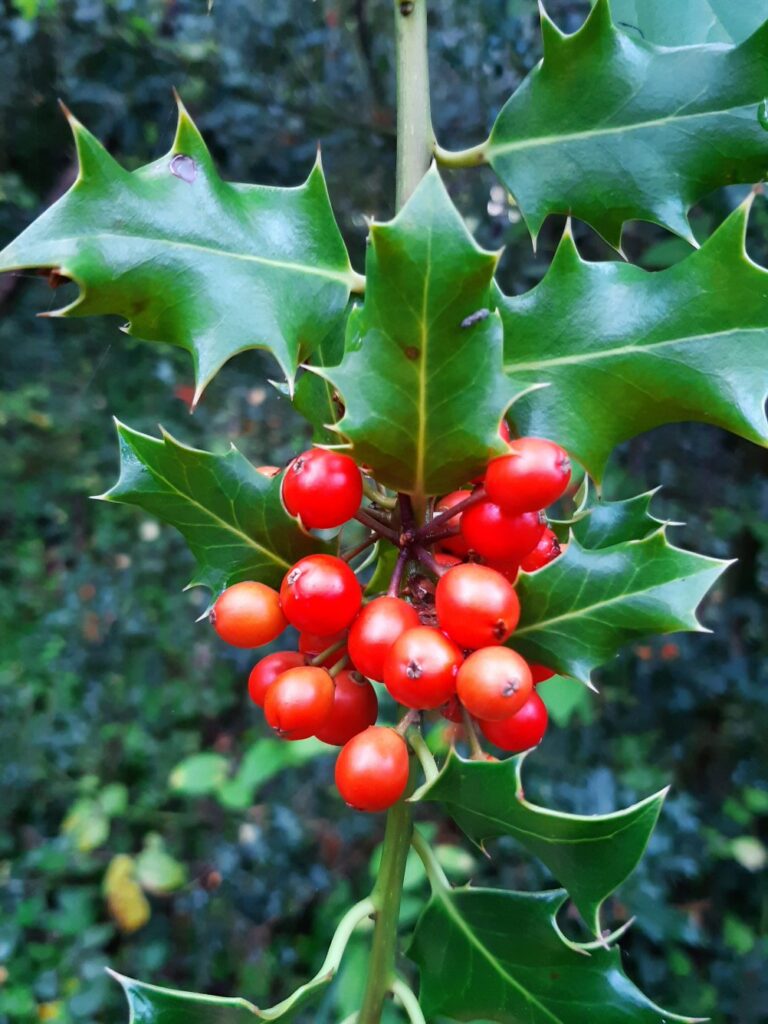
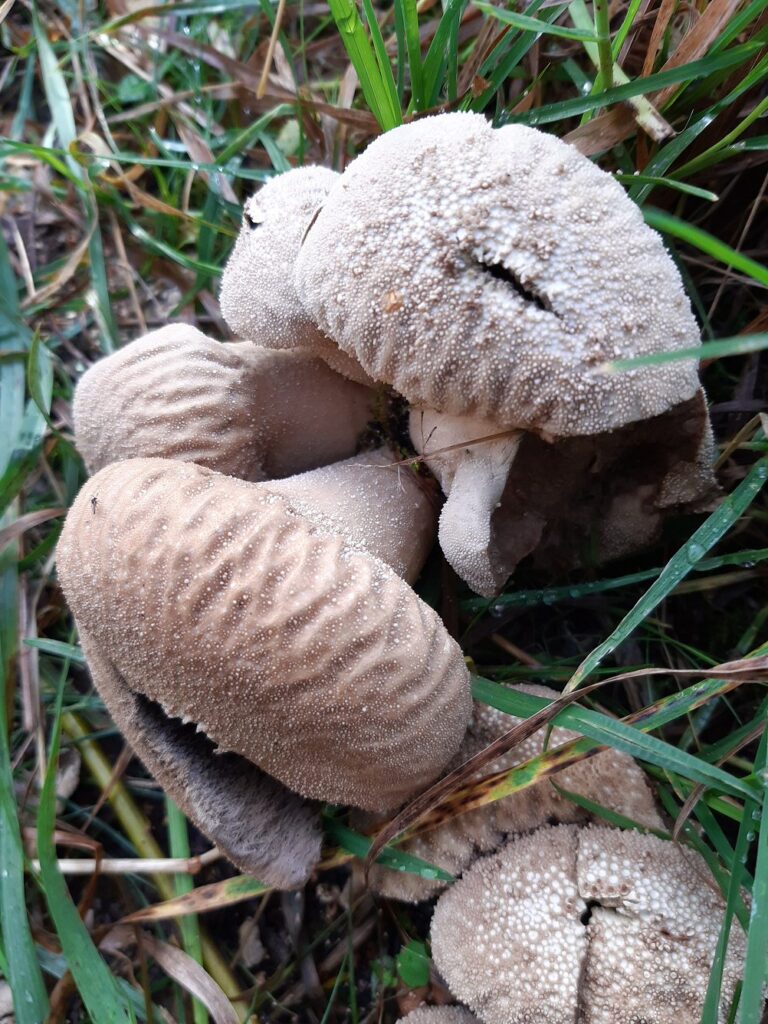
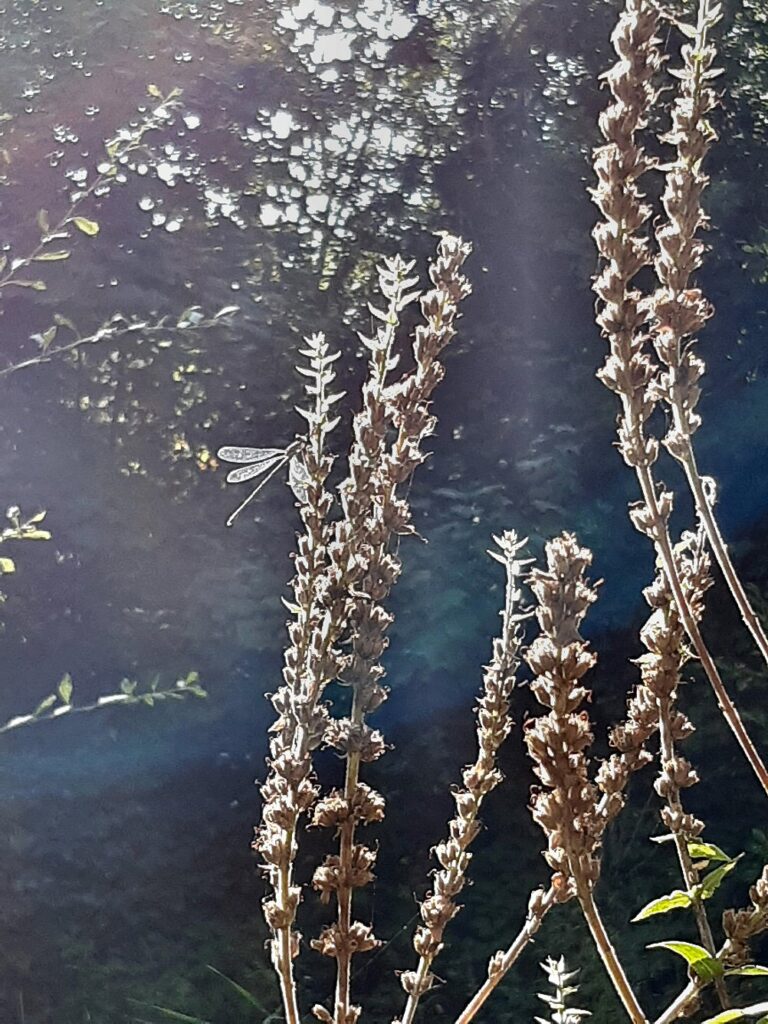
Amidst the returning crisis of Covid and the chaotic responses to it, I felt it was time to go and sit quietly and enjoy a little Nature, just as it was.
A Grey Squirrel looked up from the path below the bench where I was headed, and lolloped off. There were several little holes where it must have been hiding or retrieving nuts in its boom-and-bust economy – surplus one moment when a tree’s fruits ripen all at once, famine when nothing is ripe a while later.
The afternoon was warm and sunny at 24 Celsius, and it was very pleasantly quiet. I sat cross-legged — in half-lotus, halfway to meditation maybe — on the bench by the pond and watched.
A Willow Emerald Damselfly (aka Willow Spreadwing, a good name as it’s one of the few damselflies that perches with its wings open like a dragonfly) came and rested on a dry Purple Loosestrife flower-spike. It had a good viewpoint above the little open water remaining in the pond, and clear air all around. Soon I could see why: it chased off a fly that came close, and returned to its perch: clearly it was a territorial male. A moment later, a rival Willow Emerald flew by, and the two of them dashed and spiralled up and across the pond until the rival gave up and fled. The victor returned to another stalk nearby.
Meanwhile, several Magpies squawked and chattered, actually quite Jay-like in their calls though with more chattering conversation. They kept this up more or less continually.
A Wren hopped about in the Willows on the little island, presumably catching insects, and then whirred, its little tail still cocked, across past my shoulder into the brambles. Some Wren warning-chatter came out of the bramble thicket behind me.
At the top of the Willows on the island, a cloud of non-biting Midges clustered in their cheerful display flight, backlit by the sunshine. Lower down, bees and hoverflies whirred about, apparently finding something sweet worth visiting; perhaps drops of sticky half-dried sap excreted by aphids, as there were no flowers up there.
A Red Admiral Butterfly, an occasional visitor here, flapped gracefully past. A Speckled Wood Butterfly, very territorial, perched on the bench beside me, then angled its wings in three steps closer and closer to the angle of the sun, camouflaging itself by choosing the smallest possible shadow. It’s the same reason soldiers drape nets to stretch away from their equipment, to hide the telltale shadow (as well as to break up any recognisable outline).
Down by the water, something large stirred. A Red Fox slinked silently up the bank, no more than three metres from my seat, and vanished into the Wet Woodland.
I unfolded my legs gently. I suppose half an hour had passed: something interesting had been happening every moment.
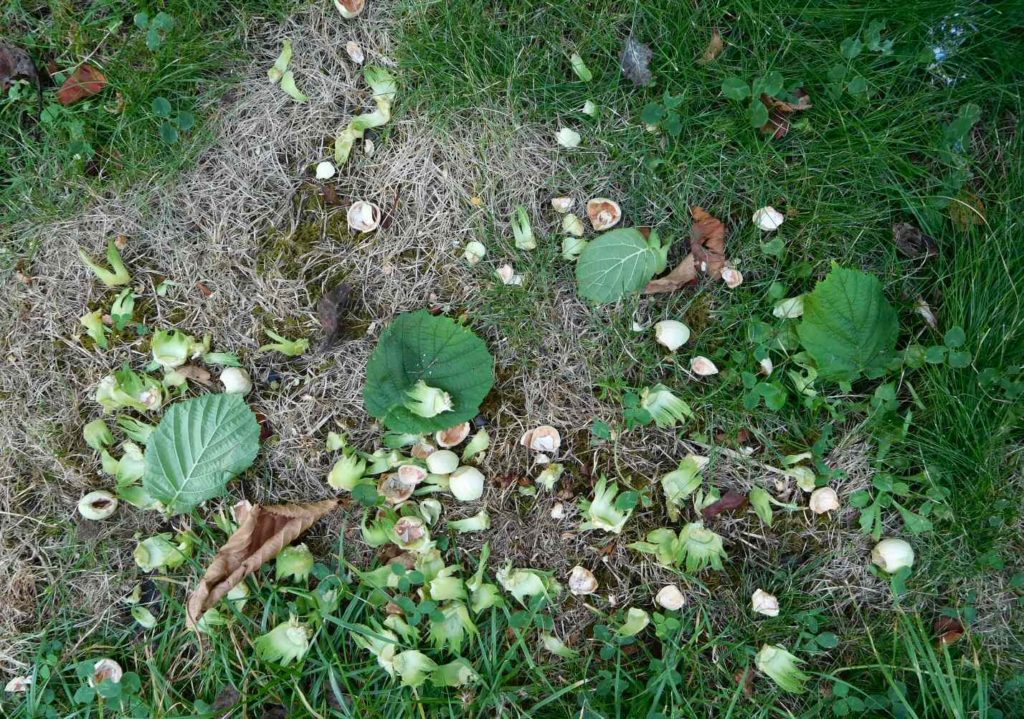
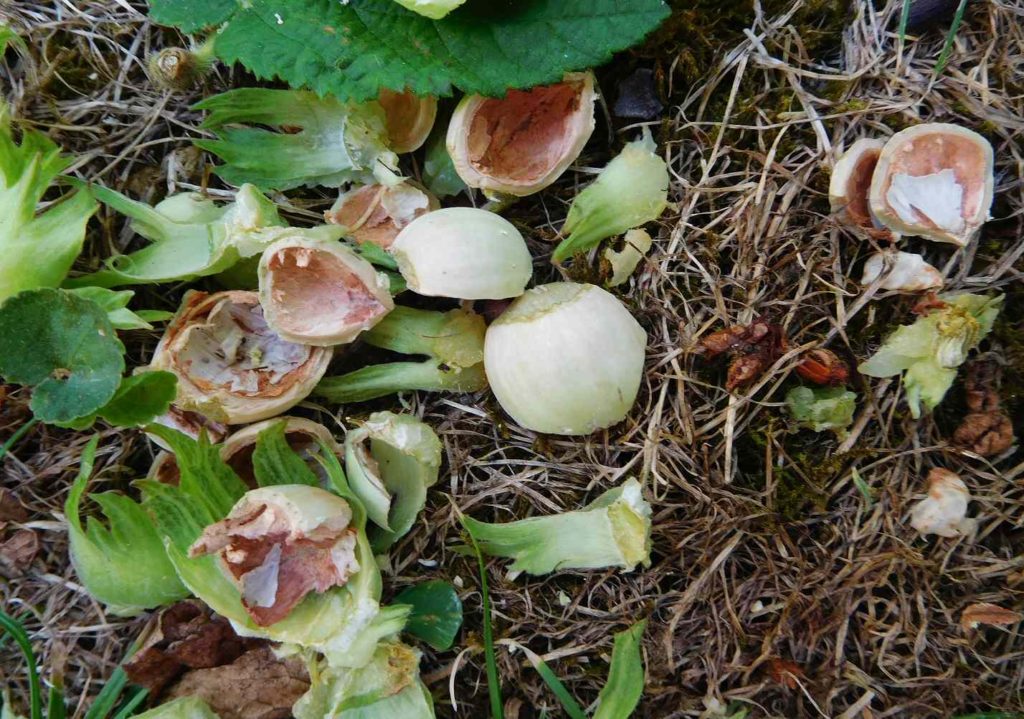
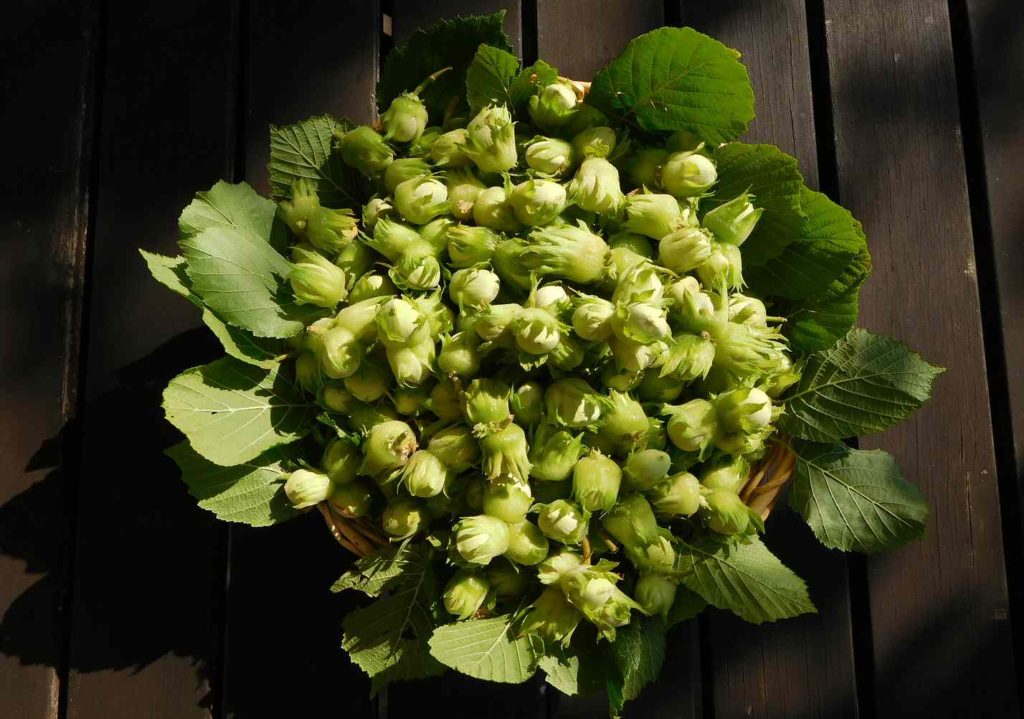
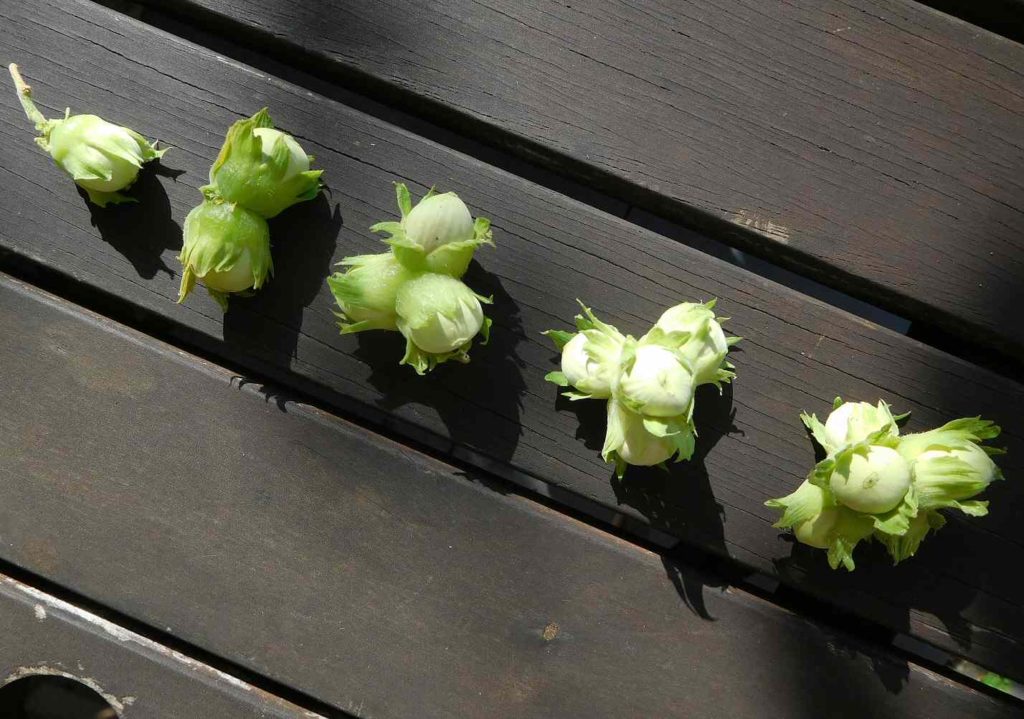
The day looked unpromising for a nature walk, let alone a butterfly transect, but it was time to do one, so after a cursory tour to clip the worst of the brambles from the paths, we set off with clipboard and cameras to see what we could find.
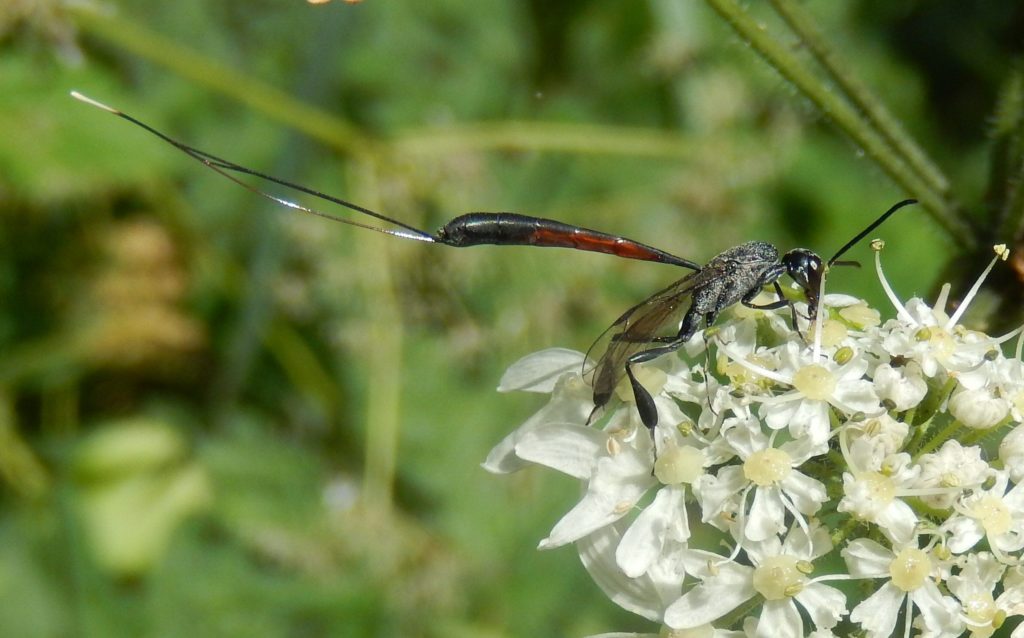
The hogweed, still in flower despite weeks of rainy weather that has caused many stalks to topple, was alive with flower beetles, bees large and small, and this magnificent Ichneumon wasp with its incredible ovipositor.
At first we saw only white butterflies, but a Comma was sunning itself, and a Speckled Wood had somehow survived the wet weather.
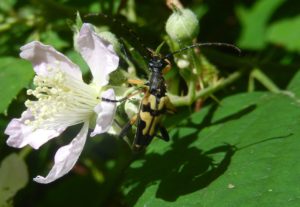
We saw two Strangalia maculata longhorn beetles taking nectar. They are Batesian mimics of wasps, looking in all truth only very slightly waspish, but perhaps young birds are put off. Or perhaps they do in fact taste foul.
We were just discussing the Sparrowhawks as we approached their nest tree when a commotion broke out along a branch, and a Sparrowhawk flew rapidly with its claws forward: a Squirrel raced away from the nest, hotly pursued by the angry bird; they leaped to the neighbouring tree and scurried up the matching branch out of sight. The Sparrowhawk broke into a loud excited chittering trill. We were all excited, laughing at the speed, the impossibility of reaching for a camera.
A Holly Blue flew over the pond, above several pairs of mating Azure Damselflies and a Yellow Iris now chewed right down to a semi-leafless state by the Iris Sawfly larvae.
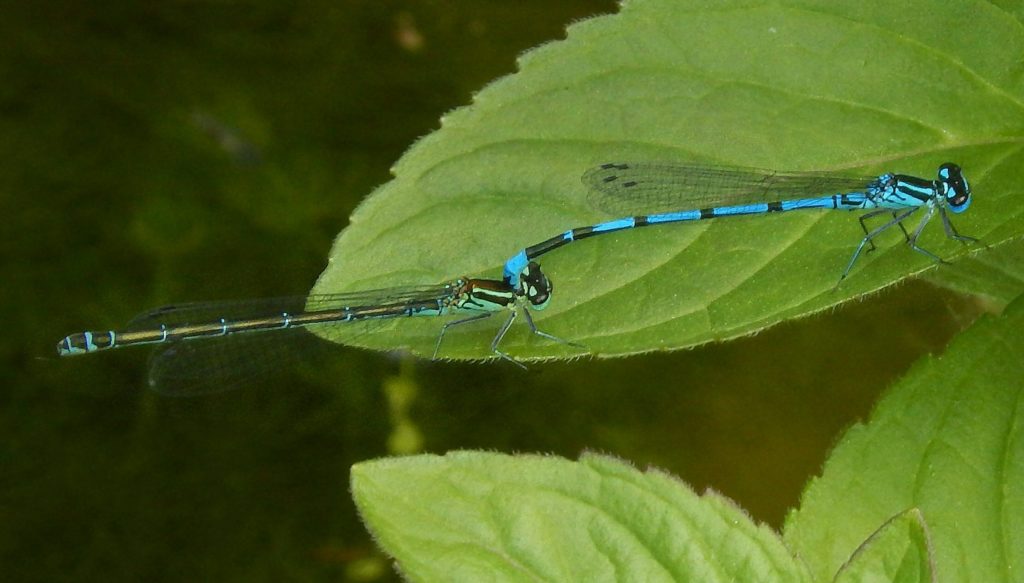
Down at the Anthill Meadow, a single Small Skipper perched on an ear of Yorkshire Fog.
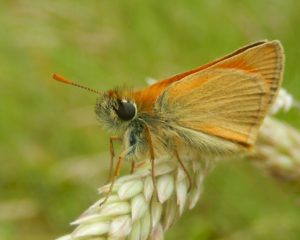
On the next ear was a male Bluetail Damselfly: they have emerged from the pond in the past week.
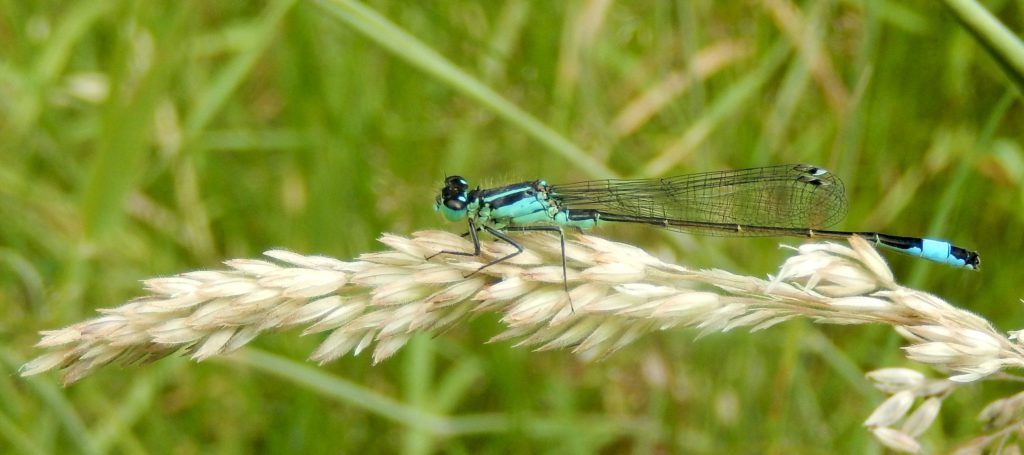
The wooden rail was sticky with snail pulp: a Song Thrush had hammered three snails open on the exposed woodwork, leaving shells and sticky patches behind.

Two days ago I saw a Cinnabar moth in the Small Meadow. There is plenty of Ragwort coming up, so with any luck there will be plenty of caterpillars soon.
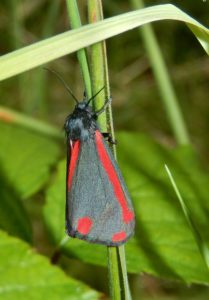
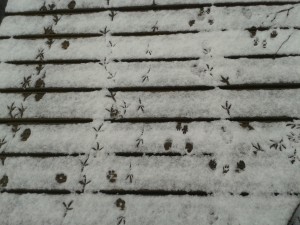
Today we woke to a snow-covered city, just a light dusting; and as often with snow, the weather was appreciably warmer than before the snow arrived.
Down at the nature reserve, the paths were empty of human footprints, but thickly sprinkled with animal tracks. Here some crows had walked to and fro across the path; there, a fox had jogged along the trail. But better was to come: the boardwalk across the pond was interlaced with tracks. On the left, a fox had gone the length of the boardwalk. In the centre, a crow had walked unsteadily along, the same way as me; and it, or another, had walked more rapidly back. On the right, more birds’ footprints: and the four-feet-together group of a squirrel, the smaller front prints clearly showing the marks of the sharp claws.
On a Birch branch above the anthill meadow, a Green Woodpecker hammered in search of food. Down by the ‘mangrove swamp’, a Jay screeched harshly, either for us or for a fox. Near the picnic meadow, a Sparrowhawk flew from its high perch, wheeled above the treetops, dived rapidly out of sight.
We carried tools and a ladder to visit the nestboxes and take down all that needed repairs. While I held the ladder, a party of four Long-Tailed Tits blew by, crossing from one Birch to the next one at a time. One of the boxes contained not just a mossy nest (like three others) but two old addled eggs, probably of Great Tit. While we struggled to prise off a somewhat too well attached box for maintenance, a Robin perched nearby, in hope of eating any grubs we might have disturbed. Several boxes had had their openings enlarged by much hammering by Blue Tits or Great Tits: nobody knows why they might do this, as it increases the threat to their nests from predators. We will make aluminium plates for the fronts of all the Tit boxes (the ones with circular holes): the Robin boxes just have a wide rectangular opening, which they definitely prefer. Inside one of the boxes was a mass of woodlice in the moss; another had a plump dead Noble False Widow Spider (Steatoda nobilis) inside.